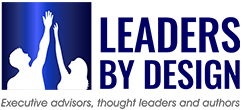Why Ignoring Bullying Is a Leadership Risk You Can’t Afford to Take.
Business leaders today face unprecedented scrutiny — from shareholders, boards, and the public — to ensure their organizations are not just profitable but healthy, inclusive, and trustworthy. While much has been written about systemic issues like institutional corruption, it’s time to confront a corrosive force that hides in plain sight: workplace bullying.
Workplace bullying is the interpersonal corruption that weakens morale, drains productivity, and silently dismantles a company’s culture and reputation. Research from the WBI (Workplace Bullying Institute) 2024 survey reveals that 74.8 million workers in the United States are affected by workplace bullying each year — 52.2 million are directly bullied and 22.6 million have an indirect experience (witness). The numbers are staggering. This abuse ranges from overt hostility — yelling, humiliation, job threats — to subtle microinequities like repeated interruptions, dismissive behavior, or exclusion from critical conversations.
For senior executives, the stakes are high. A bullying culture fuels turnover, erodes trust, and deters the diversity of thought that fuels innovation. It can cost the company dearly in lost talent, diminished engagement, absenteeism, and even litigation. Meanwhile, the human toll includes stress-related illness, depression, and damaged professional confidence. Additionally, bullying is a vicious cycle of learned behavior and stretches beyond the workplace — the impact of bullying at work often impacts the home/personal life of victims.
What drives a bully? Insecurity, fear, ego misuse, lack of empathy — and far too often, a lack of consequences. Tolerating this behavior sends a clear signal that performance trumps people, creating a culture where your best talent won’t stay.
Senior Leaders’ Role in Addressing Bullying
Eliminating workplace bullying requires more than an HR policy buried in the employee handbook. It calls for active, visible commitment from the top. As an executive, here’s how you can lead the charge:
- Commit and communicate: Make clear that bullying — overt or subtle — is unacceptable. Reinforce that your culture values quality work and respectful relationships above intimidation and fear.
- Document and address: Expect managers to track incidents and confront bullying behavior promptly. If behavior doesn’t change, escalate the response and protect those who speak up.
- Model open dialogue: Build feedback loops where employees feel safe to report concerns. Ensure that listening, respectful debate, and civil discourse are daily norms.
- Strengthen empathy at the top: Many executives underestimate how disconnected they’ve become from their teams. Build your listening skills and practice engaged understanding — your people notice.
Creating a Culture Where People — and Performance — Thrive
At Leaders By Design, we know from experience that bullying behavior stalls, rather than speeds up, productivity and employee engagement. Creating a zero-tolerance policy for bullying and encouraging managers to use their positive power and influence to increase worker engagement leads to reenergized levels of productivity. An emotionally connected and interpersonally engaged workforce will be more innovative, creative, and productive, which leads to higher profits.
Creating a resilient, inclusive culture where bullying cannot thrive is not just a moral issue — it’s a business advantage. Leaders who cultivate civility, psychological safety, and open communication will outperform those who let fear fester behind closed doors.
For a deeper dive into practical strategies leaders can use to recognize, address, and prevent workplace bullying, explore The Bully-Proof Workplace by Molly D. Shepard and Peter J. Dean.
Lead with intention. Lead with integrity. Lead the change. Partner with Leaders By Design to protect your people — and your performance. Contact us for a confidential conversation.
This article kicks off a series where we’ll explore how to spot, address, and prevent bullying — and how to rebuild trust when it’s been damaged.
Click here to read the original version of this article by Peter J. Dean published on Wharton Magazine.




